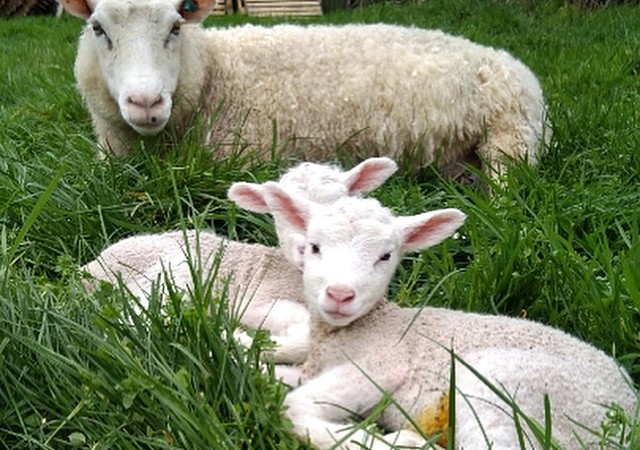

Lambing percentage, or the number of lambs raised per 100 ewes, can be improved by several methods. A rising plane of nutrition at the time of mating (also referred to as tupping) is an established method of boosting ovulation rate, also known as flushing.
However, breeds vary in their response to flushing, with those of lower prolificacy responding better than the more prolific breeds. Furthermore, ewes only respond well to better nutrition during the weeks prior to mating if they are in a medium body condition (body condition score 2.5 to 3.5). To achieve this, ewes should be condition scored after weaning and fed accordingly. Thin ewes (below condition score 2) and fat ewes (above condition score 4) will never perform to their full ability. Over-fat ewes are also vulnerable to, as they are more prone to losing their appetite during late pregnancy. Weaning is also an important time to check the health of ewes to get them in prime condition for mating. The effect of nutrition on fertility is equally as evident in hot climates as it is in temperate climates.
Ewes in poor condition at lambing time, or those that have lost a lot of condition since tupping (mating) are more likely to have problems at and after lambing, as will their lambs. Thin ewes are more likely to have difficulty delivering their lambs through exhaustion, show impaired maternal behavior, have less colostrum and milk and show reduced fertility.
Their lambs are more likely to be light and weak at birth and slow to stand and suck.
When to examine a lambing Ewe
The ewe is wandering about with a wet or bloodstained rear end, but there is no sign of a lamb. She has either aborted or has given birth to a healthy lamb which has been abandoned or stolen. Check the approximate lambing date from the ram raddle mark.
The ewe has been straining for an hour or more, but there is no sign of a lamb appearing at the vulva.
The ewe has been straining for some time, with part of the lamb visible at the vulva, but is making no headway. Part of the lamb is visible at the vulva, but the ewe has given up straining and is wandering about unconcerned or lying away on her own.
The ewe is straining, the waterbag has burst (wet behind), but no progress has been made for some time.
The lamb is obviously being born in an abnormal position – for example, tail first, or head first but without one or both of the forelegs.
The ewe which has prolapsed the vagina and been stitched up, or had a retainer and truss fitted, is showing signs of being about to lamb.
The ewe known to be carrying multiple lambs (i.e. scanned) has apparently finished lambing, but has not produced the expected number of lambs.
The ewe has been restless and uneasy for an excessively long period, but has not yet begun to strain, or it does so only intermittently. Afterbirth may be seen at the vulva, but no sign of a lamb.
 Contact Jaguza Support
Contact Jaguza Support